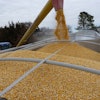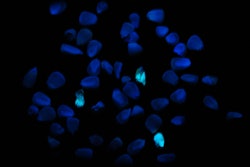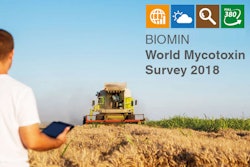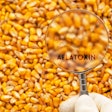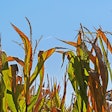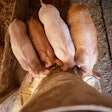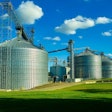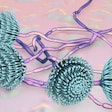In 2016, corn growers faced challenges from mycotoxins, and those challenges seem likely to show up for them again as they harvest this fall. The 2017 growing season was challenging across the U.S. Growers in different regions experienced varied weather conditions that could not only reduce yield, but could also increase plant stress and lead to challenges with mycotoxins.
Corn silage samples from across the entirety of the U.S. have shown extremely high levels of mycotoxins, particularly deoxynivalenol (DON), type A trichothecenes (T-2), fusaric acid and fumonisin. It is important to note that once there are mycotoxins in the crop, they will not go away. There will be higher levels of mycotoxins on farms practicing monocropping of corn, as opposed to those farms that are rotating crops or using deeper tillage methods.
Samples submitted to the Alltech 37+®mycotoxin analytical services laboratory between Sept. 1 and Nov. 1, 2017, show that grains contained mixtures of mycotoxins, including DON, fusaric acid and fumonisin. Forages such as corn silage, barlage and haylage samples also contained multiple mycotoxins in 2017, including DON, fusaric acid, T-2 and fumonisin.
Fumonisin is trending higher across all states as of this time and can have a negative impact on feed intake, gut health, liver function and immune response. Swine and horses are particularly sensitive.
Mycotoxins are a regular concern for producers, as they influence feed quality and animal safety. They are produced by certain species of molds and can have toxic properties that impact animal health and performance.
“Understanding the risk of mycotoxins and combinations of mycotoxins, even at lower levels, allows livestock owners and managers to institute a management program for more optimum performance and health,” said Dr. Max Hawkins, nutritionist with the Alltech®Mycotoxin Management team. “Testing feedstuffs and finished feeds is paramount to putting this management program in action.”
Mycotoxins are seldom found in isolation, and when multiple mycotoxins are consumed, they may have additive, or even synergistic, interactions that increase the overall risk to performance and health. As a result, an animal may have a stronger response than what would be expected if it was only experiencing a single mycotoxin challenge.
For feedstuffs harvested in 2017 and that are currently being fed, it is important to conduct a mycotoxin analysis that identifies the storage mycotoxins, includingPenicilliumandAspergillusmycotoxin groups, as there is potential for additional mycotoxins to develop during storage. Proper mycotoxin management techniques can reduce the risk of mycotoxins coming from feed materials as well as help to prevent the negative effects mycotoxins can on have animal health and performance.
Alltech will be hosting a webinar to review the 2017 Alltech Harvest Analysis results for the U.S. with Dr. Max Hawkins on Dec. 14, 2017 at 10:00 a.m. ET. Register for the webinar via thislink.
For more information on mycotoxin management, visitknowmycotoxins.com.




